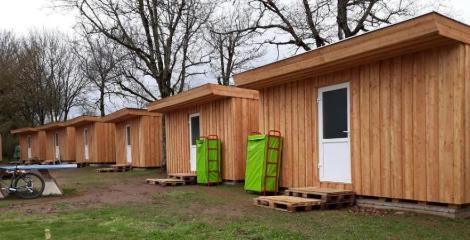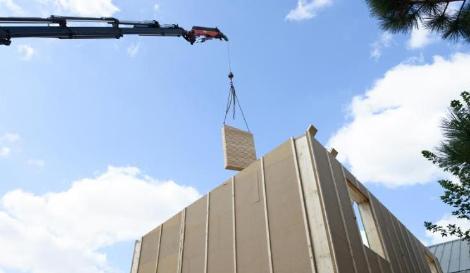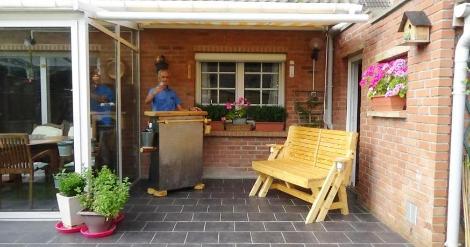Catalogue of remarkable citizen innovations 2020 : 4. The building
The power of simple ideas that re-enchant the world !
septiembre 2020
Innovation Citoyenne et Développement Durable (ICDD)
On the occasion of the 2020 Produrable Fair, in a difficult context due to a particularly aggressive pandemic, which challenges our lifestyles, our ways of producing and trading, as well as our modes of governance, the ICDD association is pleased to present some thirty innovations or remarkable citizen initiatives that it is currently supporting
Concerning climate issues, or the necessary abandonment of fossil fuels in the short or medium term, it was frequently said in high places that a solution would be found: Each time a major problem was posed, it seemed that a solution was always found, until now.
« Don’t worry: we’re taking care of you and everything is under control: you can come and go as you please. In fact, it has become clear, especially with the arrival of the pesky and elusive Coronavirus, that this is not the case: our world is very fragile, and it doesn’t take much to suddenly stop the frenzy of human activity and confuse the Academies of Science, Medicine and Technology.
Things are becoming more problematic, more complex and more difficult to predict. Faced with the urgency of the situation, faced with the tragedies that are happening and that are occurring more and more frequently, we realise that it is urgent for everyone, and in particular all citizens, to be « on deck » and to see what they can do to participate in the resolution of the problems that collectively face us all.
Citizens have not waited to be asked to do so: they have long been aware of the issues at stake and, here and there, have devised solutions that are particularly relevant:
-
By their originality
-
By their simplicity
-
By their return to a common sense that had often been lost
-
By their concern for economy of means
-
By their sense of solidarity
-
By their formidable efficiency
The « problem » being that « we didn’t ask them anything »! It is therefore very difficult for their solutions to be heard, encouraged and supported, and then, once they have been developed, to be promoted to the extent of their potential impact, which is sometimes considerable.
The field of citizen innovation has never been so vast; it concerns all aspects of common life, all dimensions of the human ecosystem. To carry out our monitoring, we have focused on the priority expectations of citizens in a number of areas.
The building of tomorrow must be ecological… in its design, in its construction, throughout its life cycle, and must be almost entirely recyclable.
This is not easy, but many architects are now proposing eco-designed solutions for passive houses.
So there are many new house solutions on the market that meet the requirements of the « world of tomorrow ». The problem is :
-
They are often expensive
-
And that the new techniques applied to new buildings do not solve the problem of the existing building stock.
For existing buildings, it is very difficult to find inexpensive renovation solutions, so much so that it is often cheaper to install energy-efficient solutions than to force oneself to use strict insulation.
New, demountable and recyclable green housing at very low cost
There are « new, very low cost » solutions sought to house homeless people and migrants, while being environmentally friendly and fully recyclable. This is what Sofrinnov, champion of passive housing in the circular economy and at the lowest cost, is proposing.
The process is simple and lends itself to self-build after a quick training. The building is assembled essentially by screwing and placing very simple to manufacture connecting parts. fne-midipyrenees.fr/2017/09/14/fiche-n12-des-palettes-pour-se-construire-un-toit/ . See Sheet 4.1. and www.sofrinnov.fr/

Sofrinnov project in Rodez
The solution is based on the construction of standard recycled pallets, knowing that after 7 years, logisticians no longer know what to do with their pallets. Sofrinnov recovers them and recycles them to combine them and build partition elements: by placing the pallets face to face and inserting an insulating material between them, we obtain a particularly solid and insulating partition.
New, dismountable and recyclable ecological housing: the House that moves!
For its part, the company Agilcare offers real ecological houses that are also designed to be dismantled: in many places, land is « available » … but « temporarily »: it is impossible to build… unless the building can be dismantled and rebuilt elsewhere!

Initially designed as a single-storey « pavilion », the process is now moving towards multi-storey demountable building solutions:

With the « proof of concept » of « La maison qui déménage », it is now a question of designing and building wood buildings in short, energy-efficient chains, whose end of use or end of life is anticipated by the possible reuse of all of its elements in new buildings. (Sheet 4.2 and www.agilcare.co/ )
Solutions for the renovation of existing housing
The idea of the Centre de Développement des Eco-Entreprises (CD2E) is to bring together renovation actors to make it possible to renovate buildings in an environmentally friendly way. (Sheet 4.3, www.cd2e.com/ ).
This type of grouping is well underway with the creation of an efficient renovation demonstrator and the updating of the interest of a hemp sector for insulation. The challenge is to prepare a massive housing renovation approach in the region.

Systematic renovation of housing. In Loos-en-Gohelle, near Lens in the Pas de Calais, Cd2e and Ekwation are inaugurating an « Ecoconstruction Theatre », an educational tool for professionals.
A similar approach has been taken in the framework of the « stop energy exclusion » operation (www.stopexclusionenergetique.org), involving companies and organisations such as DORéMI, EcoHabitat, Renovons, etc.
Renovation and energy autonomy through « Do It Yourself
Another citizen’s approach was implemented by Frédéric Wetzel, a retired SNCF employee, who is both very DIY and very committed to « saving the planet »: he made his 1980s energy-saving pavilion in Baisieux (a town on the border with Belgium, opposite Tournai) almost passive himself. Patiently, year after year, he continued his renovation, starting with the installation of a veranda on the north side, the installation of a solar thermal panel, then a photovoltaic installation, while lowering his energy needs (LED lamps as of 2010, search for low-energy appliances, etc.). In 2011 he could have cut his ties with EDF, but he preferred to keep the line…to sell the KWH he produces and does not consume. To convince his fellow men to do the same (especially retired people who have the time and know how to tinker), he gives courses and advice free of charge: on his website " www.jeveuxsauverlaplanete.fr " (see Sheet 4.4)

Mr Wetzel, a Do It Yourself enthusiast, in his passive house.
Referencias
links to sheets : inks to the sheets see pdf doc attached(pdf/710 – icdd_rpertoire_des_innovations_citoyennes_produrable_200720.pdf)